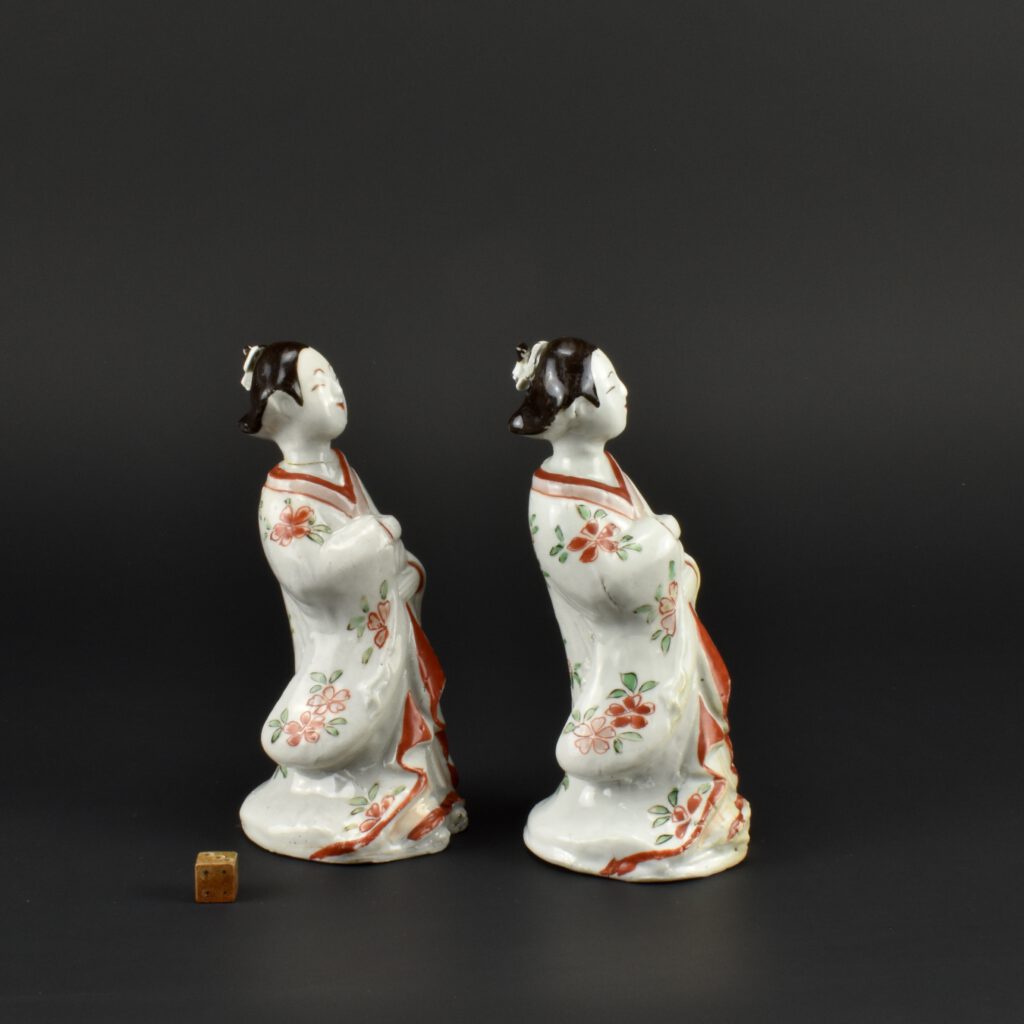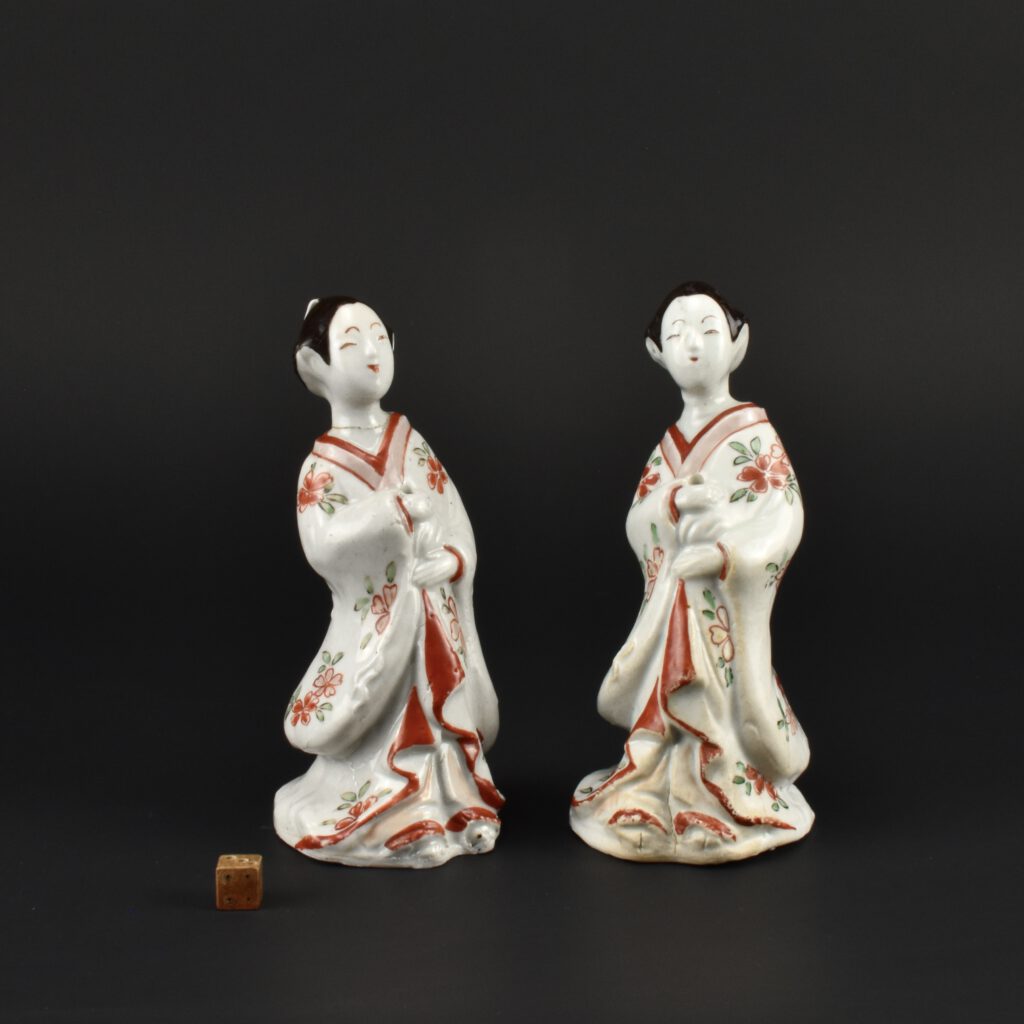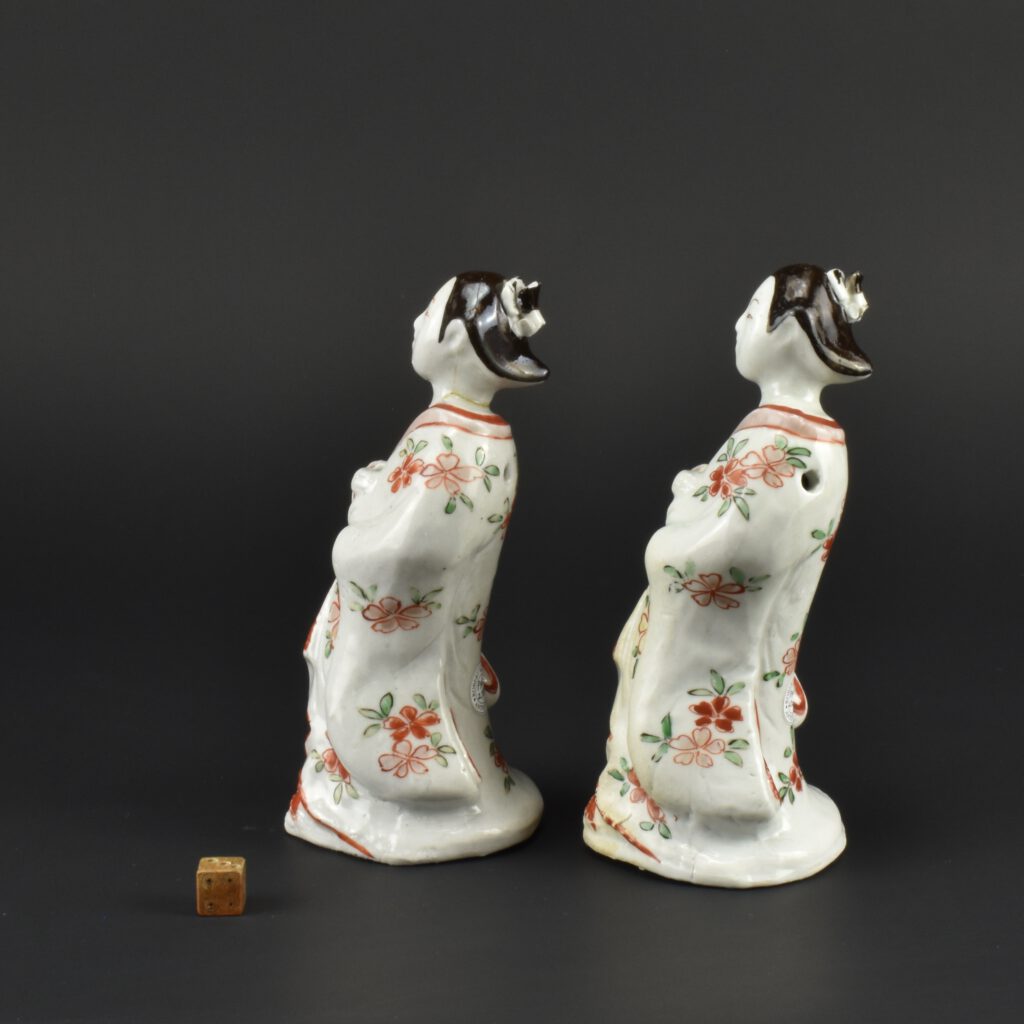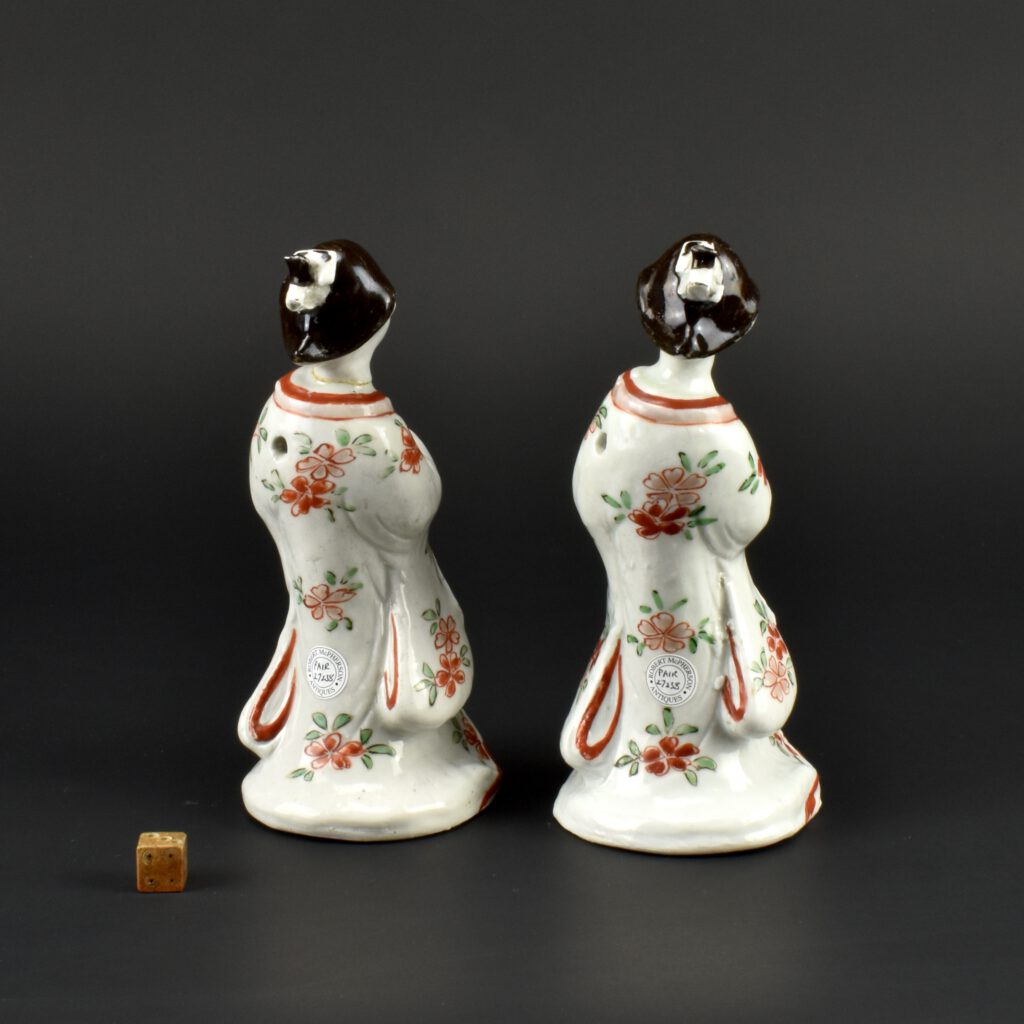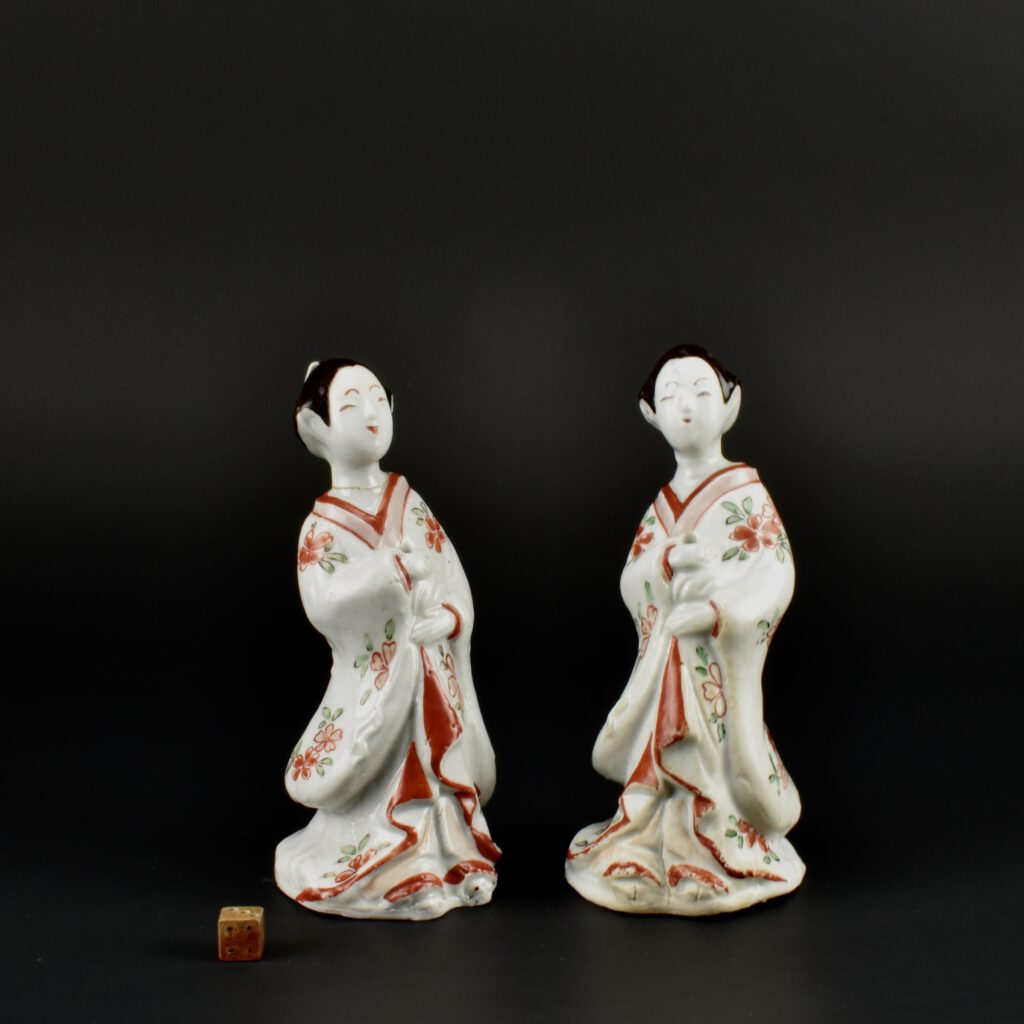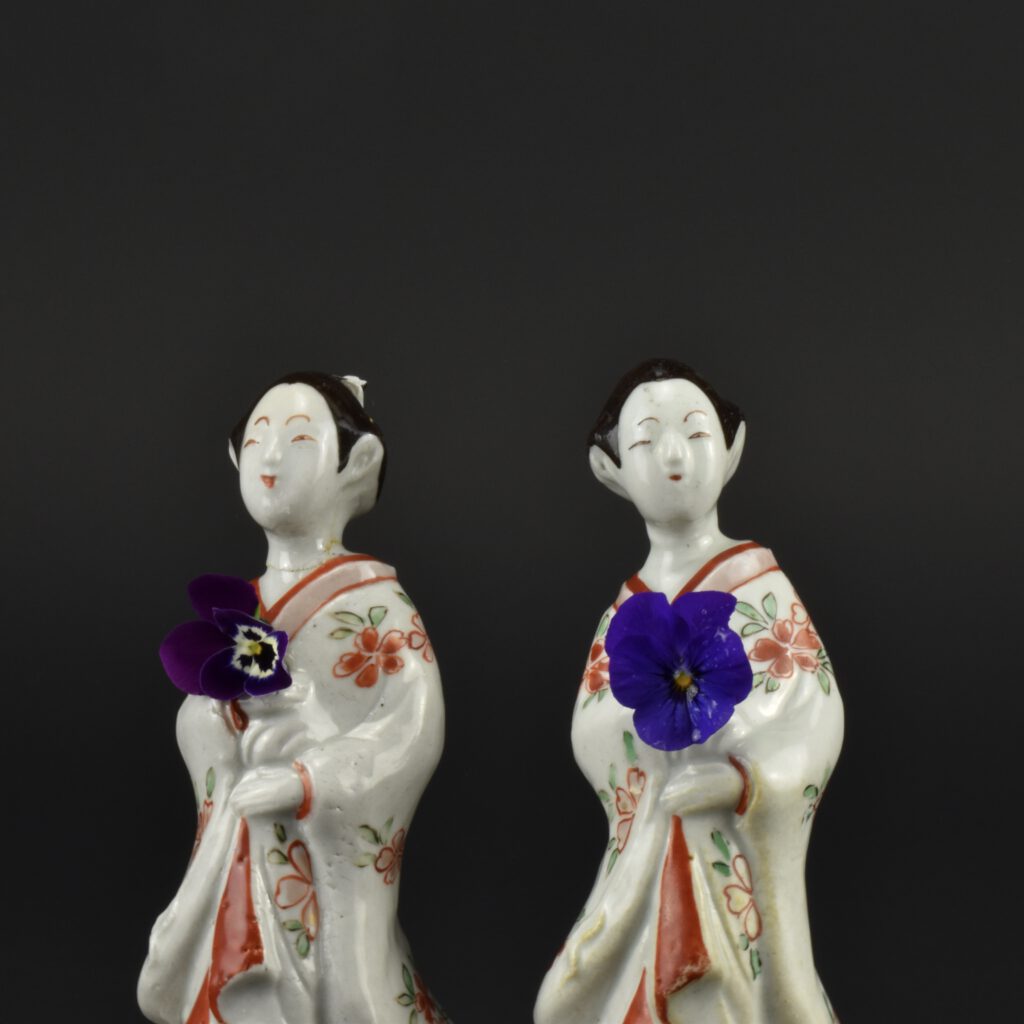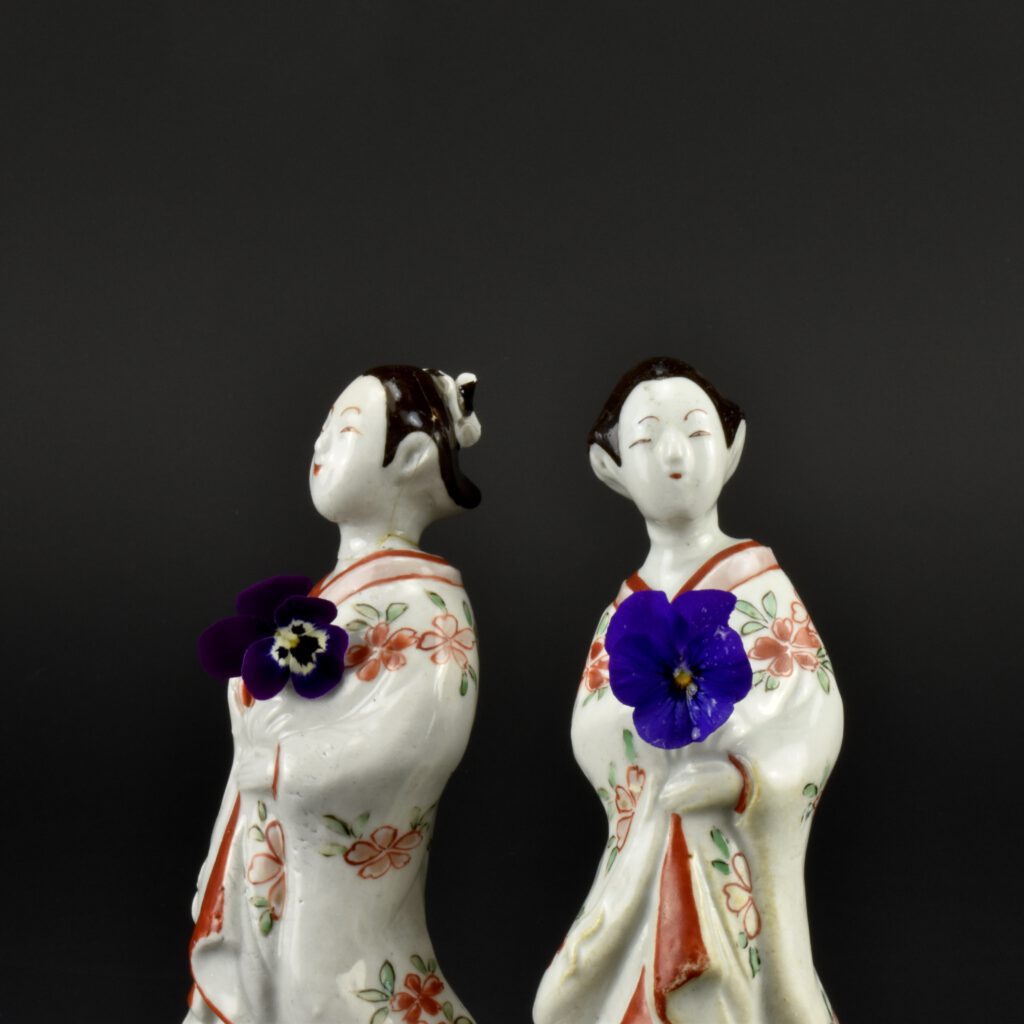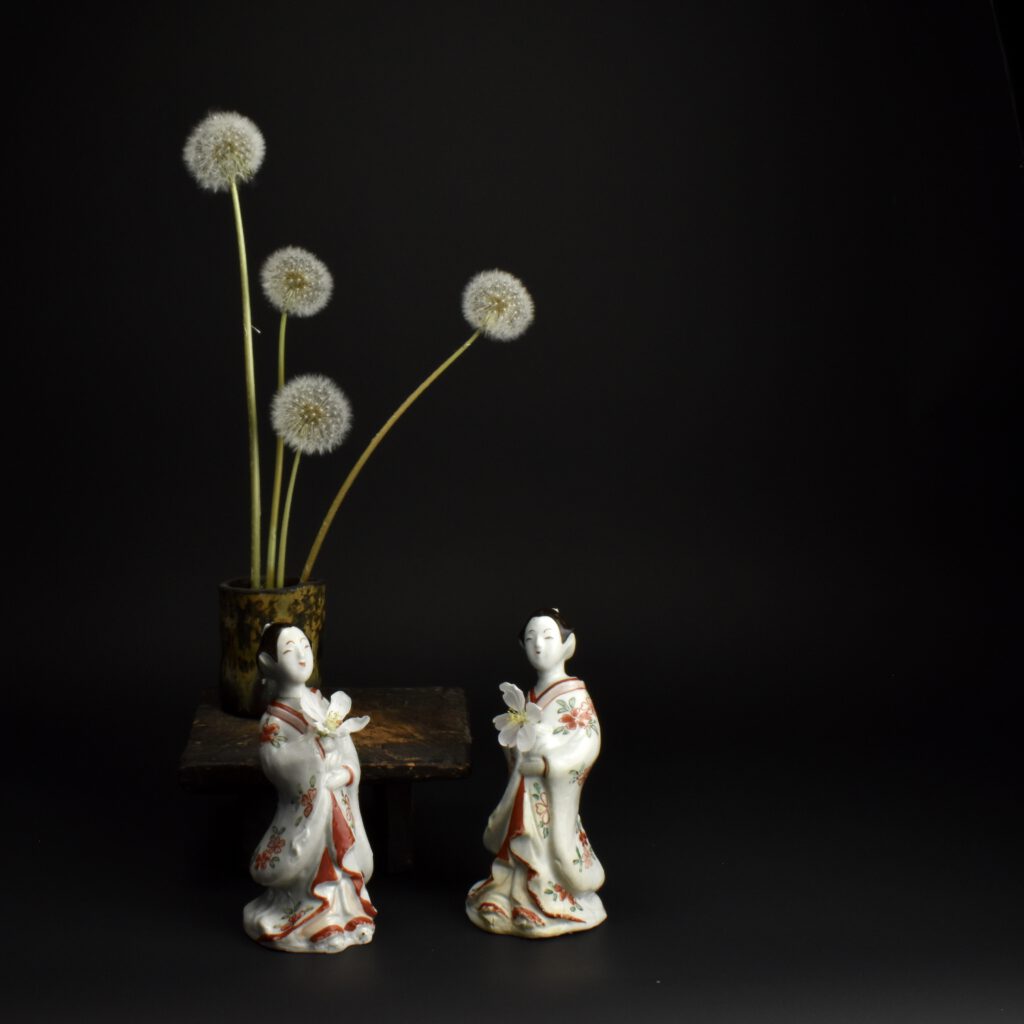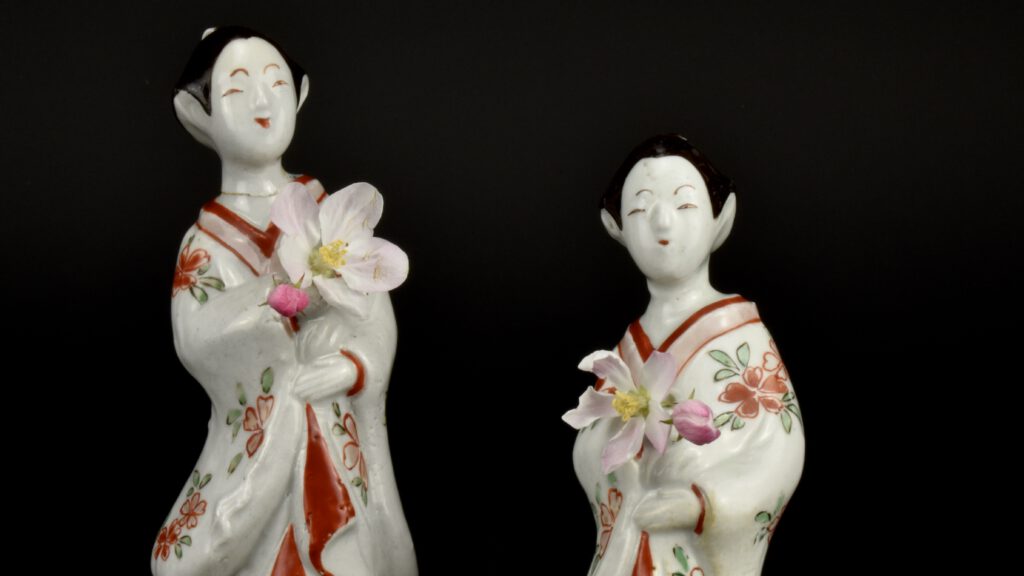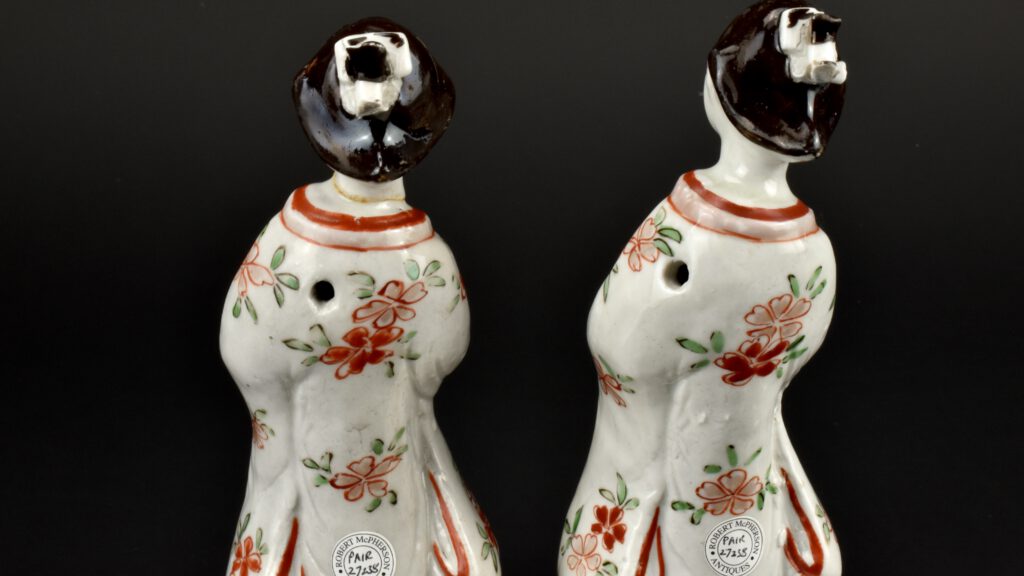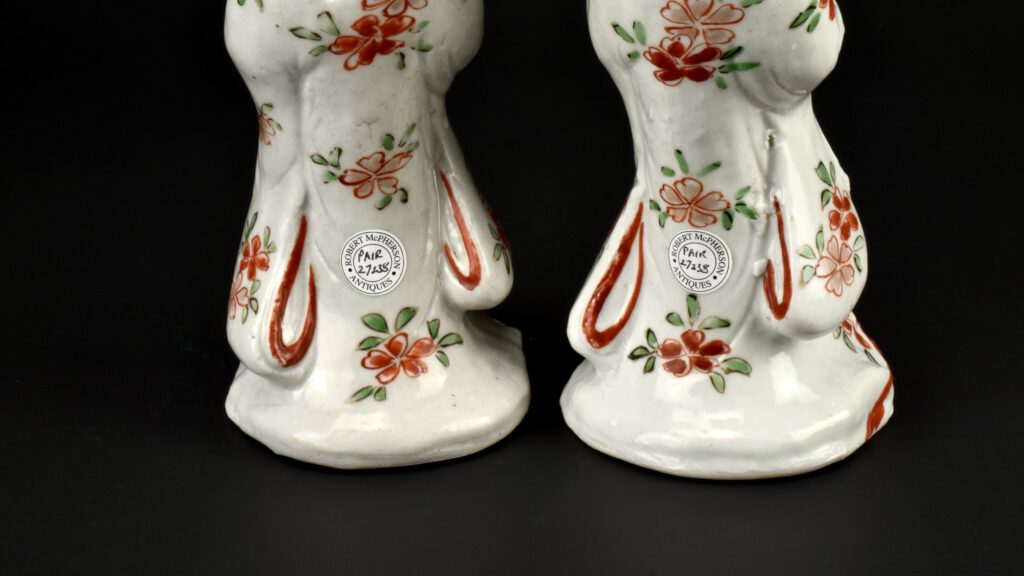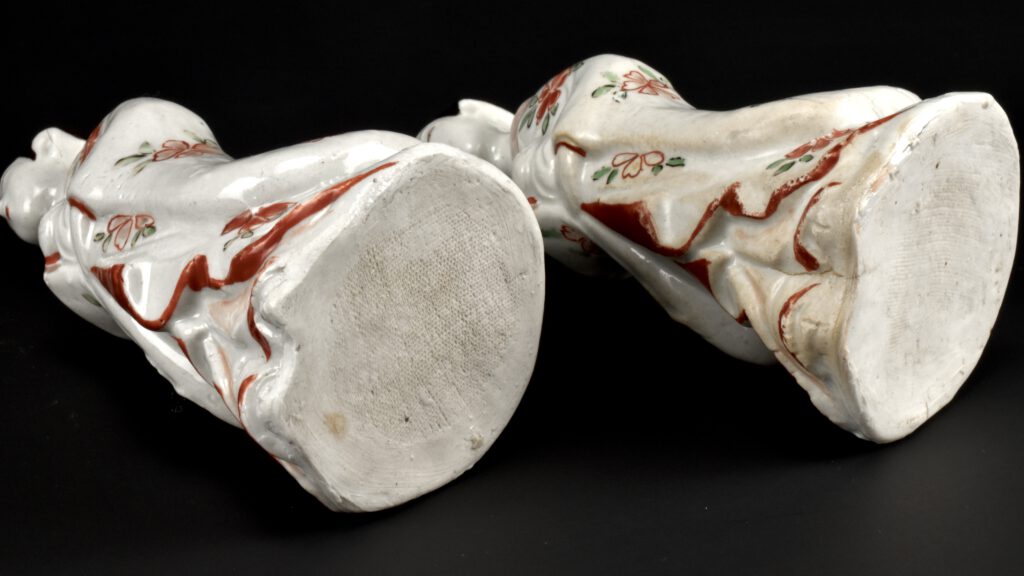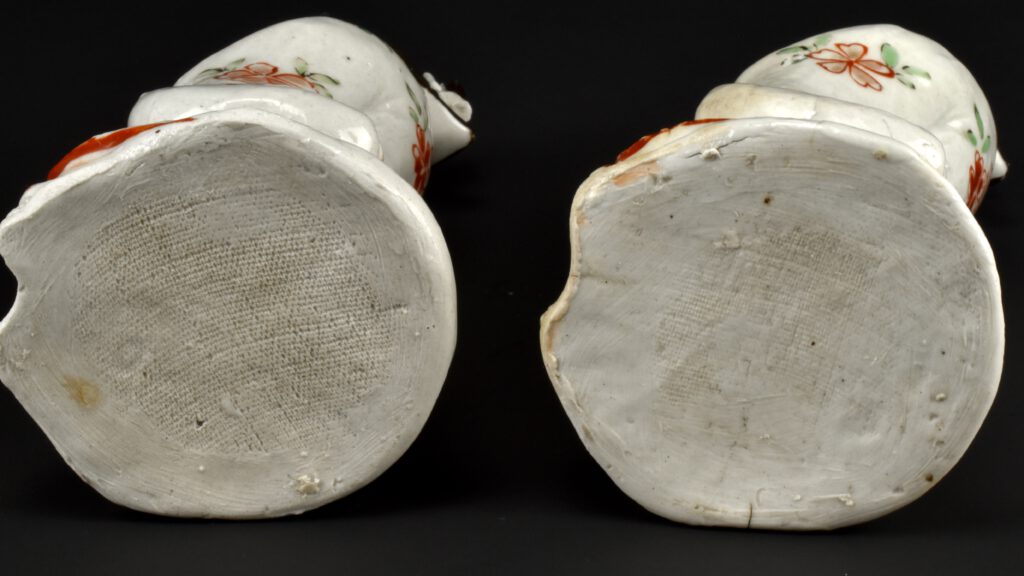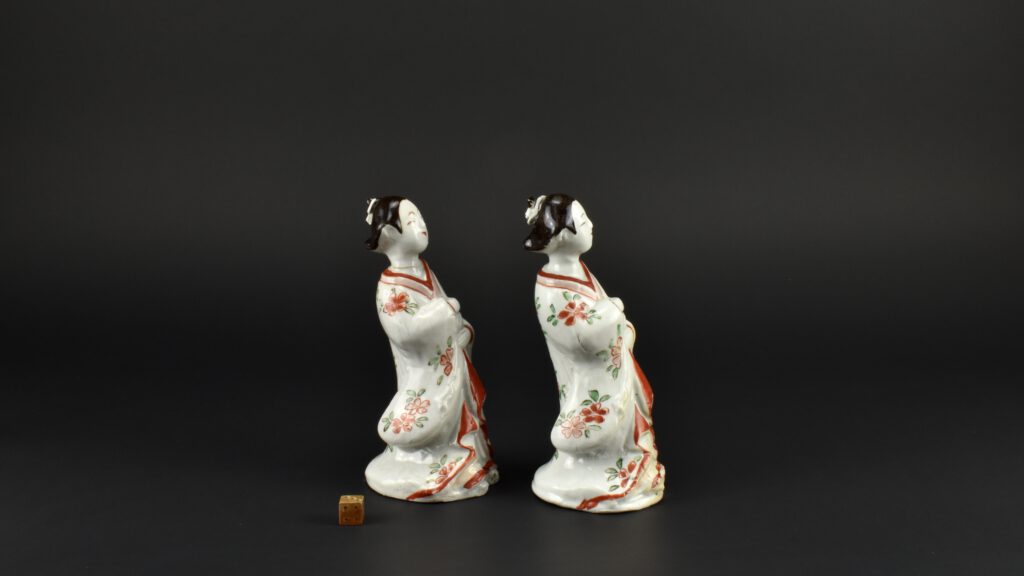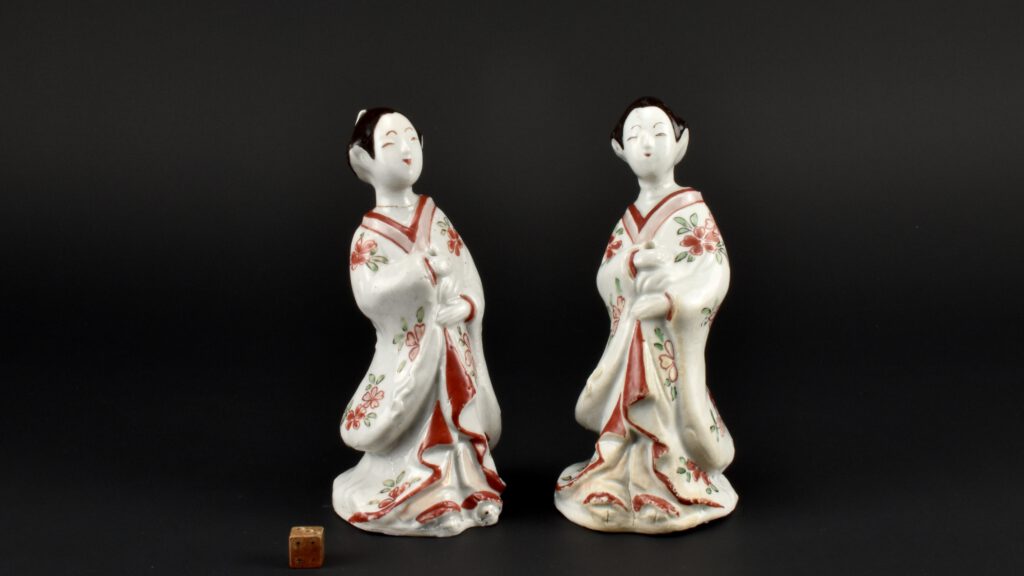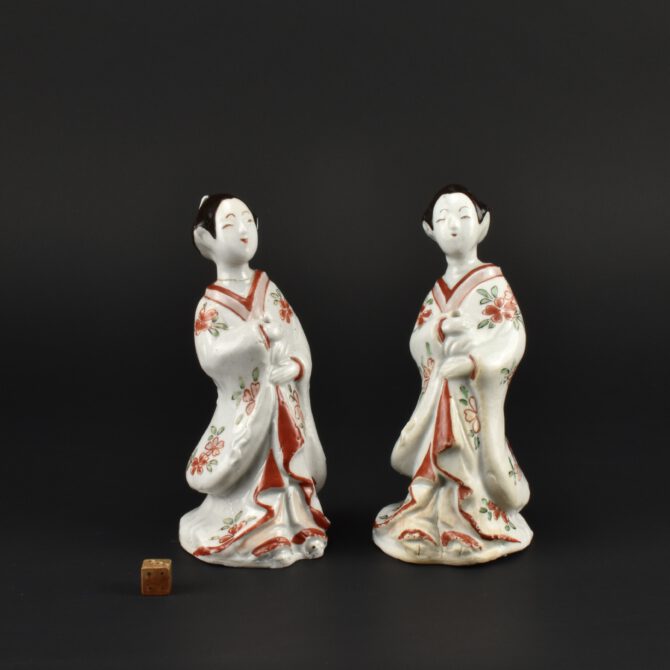
A Pair of Small Japanese Porcelain Imari Bijin, Early 18th Century.
A Pair of Small Japanese Porcelain Imari Bijin (Beauties), Arita Kilns c.1700 – 1730. 18th Century Arita porcelain Bijin, as well as the earlier Kakiemon Bijin, often differ from one figure to another in terms of decoration, in other words they are perhaps not seen as a pair as defined by ridged European standards, however these small figures appear to have been made from the same mould and simple decoration of flowering cherry is very similar The Japanese word for flower (hana) often refers specifically to cherry blossom. Flowering cherry is normally tied to other elements in nature, for example the start of Spring, flowing rivers or the darkness of night. Depictions of such Bijin, or beautiful ladies, were popular in Japan at this time. Ukiyo Ningyo (dolls of courtesans) became popular as well as the new art form of ukiyo-e, or “pictures of the floating world.” Ukiyo-e woodblock prints showed various aspects of the pleasure quarters that flourished during this period, including courtesans and onnagata, male kabuki actors who played female roles. The fashions of the day were typically shaped by the workers of the pleasure quarters, and this figure’s attire is probably also styled on such a model.
Christian Jorg explains in his excellent book “The function of these large figures is unclear. They were probably considered as exotic, decorative items in the West, and must have reminded people of the Chinese ‘Long Eliza’ so often depicted on Kangxi export porcelain. The first shipment to the Netherlands in 1659 already included ‘100 various dolls” (‘Fine and Curious, Japanese Export Porcelain in Dutch Collections’, see ‘References’). It seems this shipment and a subsequent delivery in 1665 were all small figures, therefore most figures would been bought privately as part of the ‘private trade’ concession. This makes sense as most Chinese porcelain figures in the 18th century was private trade. Jorge goes on to say “Amazingly, standing figures were rarely copied in European ceramics. In fact, only one small faience example is known thus far”. This is also illustrated in ‘Fine and Curious, Japanese Export Porcelain in Dutch Collections’ and can be seen in Groningen, see below.
Imari Porcelain is the European collectors` name for a type of Japanese Porcelain made in the town of Arita, in the former Hizen Province, north western Kyūshū, and exported via the port of Imari, specifically for the European Export trade. Imari was simply the trans-shipment port for Arita wares, no porcelain was made there. The kilns at Arita formed the heart of the Japanese Porcelain industry, which developed in the early 17th century. Although Imari originating in Japan the term is used to describe a whole range of ceramics from all over the world, they are all linked by their bright distinctive palette of blue, red and gold. The cobalt that created the blue was added prior to glazing, while the iron-oxide red and the gilding were applied after glazing.
See Below For More Photographs and Information.
SOLD
- Condition
- 1) The head is in poor condition ; it has been broken off at the neck, and then the head has a vertical brake, it has been crudely stuck back. Small losses to the back of the tied hair. 2) In good condition, minor losses to the hair at the back of her head.
- Size
- Height 16.6 cm (6.5 inches)
- Provenance
- N/A
- Stock number
- 27238
- References
- For a pair of small Japanese porcelain bijin see : Fine and Curious, Japanese Export Porcelain in Dutch Collections (Christian J.A. Jorg, Hotei Publishing, 2003. ISBN 90-74822-16-9. Page 281, plate 354.
Information
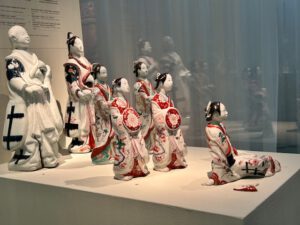
Dragons and Demons – 5,000 Years of Asian Ceramics from the Anders Collection.
Ends 4th January 2026
The Groningen Museum,Museumeiland 1, 9711 ME
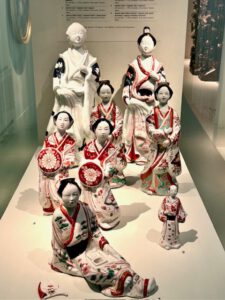
Dragons and Demons – 5,000 Years of Asian Ceramics from the Anders Collection.
Ends 4th January 2026
The Groningen Museum,Museumeiland 1, 9711 ME
